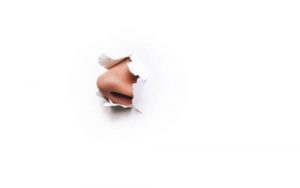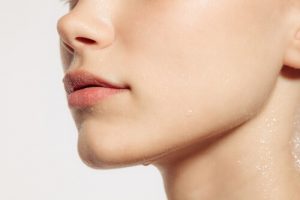With its distinctive and adorable features, the upturned button nose has long been celebrated as a symbol of youthful appeal in various cultural aesthetics. This article delves into the allure of the upturned button nose, exploring its characteristics and why it continues to be a coveted feature among those seeking cosmetic enhancements. Stay tuned as we uncover the secrets behind its popularity and impact on overall facial symmetry.
Defining the Upturned Button Nose: Characteristics and Appeal
With its distinctive aesthetic, the upturned button nose is often revered as one of the most attractive nose shapes due to its youthful and endearing appearance. This nose type, defined by several key characteristics, is popular for those seeking nasal cosmetic enhancements.
Small and Rounded Nasal Tip:
The defining feature of the upturned button nose is its petite and curved tip that gently tilts upwards, imparting a cheerful and approachable expression.
Short Nose Bridge:
Typically, the bridge is less pronounced, contributing to the nose’s subtle profile that complements other facial features without overwhelming them.
Graceful Alignment with Upper Lip:
The slight upward curve of the nasal tip harmonizes beautifully with the curve of the upper lip, enhancing overall facial symmetry.
Softens Facial Profile:
Unlike more angular or sharp nose shapes, the rounded tip of the upturned button nose softens the visage, accentuating the eyes and cheeks for a balanced look.
Ideal for Facial Harmony:
This nose shape is often chosen for rhinoplasty because it can significantly enhance facial balance and aesthetics, providing a naturally youthful appearance.
Exploring the Diversity of Nose Shapes: A Guide to Unique Nasal Features
Various nose shapes contribute distinct characteristics to one’s appearance in facial aesthetics. The bulbous nose, with its rounded nasal tip, contrasts sharply with the Nubian nose, known for its broad width and length.
The Roman nose, notable for its strong, straight bridge that descends to a pronounced curve, embodies classical beauty. The Greek nose, similarly straight but with less protrusion, embodies classical beauty.
On the other hand, the celestial nose and button nose are often admired for their aesthetically pleasing small size and subtle curves.
The snub nose, with its short and slightly upturned shape, is similar to the snub nose, which is also petite and uplifted at the tip.
Further exploring the variety, the straight nose offers a simple, clean profile that aligns perfectly from the nasal bridge to the tip. In contrast, the aquiline nose and hawk nose feature a prominent bridge that gives them a bold look, often associated with strong personalities.
The rounded nasal tip softens facial features, making it a desirable trait among those seeking a gentler facial expression. Each nose shape, from the refined button nose to the distinguished hawk nose, brings a unique aspect to facial symmetry and personal identity, highlighting the vast array of human features.
Historical Significance and Cultural Perceptions
 The historical significance and cultural perceptions of different nose shapes, particularly the upturned button nose, offer a fascinating glimpse into how beauty standards have evolved and reflect broader societal values. This specific nose type carries unique connotations across different cultures and historical periods:
The historical significance and cultural perceptions of different nose shapes, particularly the upturned button nose, offer a fascinating glimpse into how beauty standards have evolved and reflect broader societal values. This specific nose type carries unique connotations across different cultures and historical periods:
Symbol of Youth and Beauty
In many Western cultures, the upturned button nose is often associated with youthfulness and charm. Its petite and rounded appearance evokes a sense of innocence and is frequently depicted in art and media as an ideal of feminine beauty.
Renaissance Art
During the Renaissance, artists often portrayed subjects with delicate, slightly upturned noses, seen as a hallmark of refinement and attractiveness. For centuries, this idea influenced European beauty standards, emphasizing small and symmetrically balanced facial features.
Modern Media Influence
In contemporary society, the upturned button nose continues to be popularized by celebrities and beauty influencers. It is often highlighted in cosmetic advertising and is one of the most requested shapes in consultations, reflecting ongoing trends in beauty and fashion.
Cultural Variations
While the upturned button nose is celebrated in many Western societies, other cultures may favour different types of noses and nasal profiles. For instance, in some Asian and African cultures, broader and flatter noses are often seen as more attractive, symbolizing strength and character.
Impact on Social Perceptions
Beyond aesthetics, the shape of one’s nose can also influence social perceptions. Studies suggest that certain types of nose shapes can affect how individuals are perceived regarding personality and social status. An upturned nose may be associated with approachability and friendliness.
The cultural and historical narratives surrounding nose shapes like the upturned button nose underscore the deep connection between facial features and societal values. They reveal how beauty standards are skin deep and embedded in cultural identity and historical context.
The Role of Genetics in Shaping an Upturned Button Nose
The role of genetics in shaping an upturned button nose is crucial, as this distinct facial feature is predominantly inherited. Understanding the genetic factors can explain why certain nose shapes, like the upturned button nose, appear more frequently in some populations than others.
Genetic Inheritance
The shape of the nose, including the upturned tip and button nose, is largely determined by the genetic blueprint inherited from parents. Specific genes dictate the development of nasal structures, influencing everything from the nostrils’ width to the nasal bridge’s height and the upturn of the nasal tip.
Ethnic Variability
While genetics play a universal role in nasal development, the prevalence of specific nose shapes, including the upturned button nose, varies across ethnic groups. This variation of common nose shape is due to the diverse genetic backgrounds and evolutionary adaptations unique to each population. For instance, the upturned button nose is often more common in individuals of European descent due to genetic traits passed down through generations.
Polygenic Traits
The development of the nose is a polygenic trait, meaning it is controlled by more than one gene and influenced by environmental factors. This complexity makes predicting nose shapes based solely on genetics challenging but highlights the intricate nature of genetic inheritance.
Developmental Factors
During fetal development, the formation of the nose is influenced by a complex interplay of genetic signals that guide the growth of cartilage and bone. Any slight variation in these genetic instructions can alter the shape of the nose, contributing to the uniqueness of each individual’s facial features.
Research and Studies
Ongoing genetic research continues to uncover which specific genes are responsible for various aspects of nasal shape. This research helps understand the biological basis of facial features and enhances approaches in medical fields like reconstructive and genetic counselling.
The upturned button nose, like other facial features, is a product of genetic inheritance shaped by the specific combination of genes passed down from one’s parents. This genetic influence underscores our personal and familial connection with our facial features, linking us to our ancestors through the visible traits we inherit.
Cosmetic Procedures for Enhancing the Upturned Button Nose
 Cosmetic procedures for enhancing the upturned button nose aim to refine and accentuate its naturally charming attributes while maintaining balance and harmony with the rest of the facial features. Here are some of the most common surgical and non-surgical options:
Cosmetic procedures for enhancing the upturned button nose aim to refine and accentuate its naturally charming attributes while maintaining balance and harmony with the rest of the facial features. Here are some of the most common surgical and non-surgical options:
Rhinoplasty (Nose Job)
This is the most comprehensive approach to modifying the nose. For an upturned button nose, the procedure might focus on subtle refinements like enhancing tip definition or adjusting the nasal bridge to complement the tip’s upturn better. Rhinoplasty can involve reshaping the cartilage and bone fleshy nose to achieve the desired contour.
Tip Plasty
This procedure specifically targets the nasal tip and is ideal for those who are mostly satisfied with the overall structure of their nose but seek refinement of the tip. Techniques can include cartilage reshaping to enhance the nose tip’s definition and projection, which enhances the upturned appearance without altering the rest of the nose.
Filler Injections
Non-surgical rhinoplasty using dermal fillers can be an option for less invasive enhancements. Fillers can subtly alter the nose’s profile by smoothing out any asymmetries around the nasal tip or subtly lifting the tip if it is not upturned enough. The results are temporary but can offer a glimpse into the potential outcomes of more permanent surgical options.
Botox
Small amounts can be injected to relax specific muscles around the nose, subtly lifting the nasal tip. This method is subtle and temporary but can be suitable for individuals looking for minimal changes.
Thread Lifts
This less common procedure involves inserting temporary, absorbable threads that lift the nasal tip. The threads encourage collagen production and offer a modest lift, enhancing the upturned appearance.
Each procedure requires careful consideration and planning. Potential candidates should consult with an experienced cosmetic doctor who can provide a detailed assessment and tailor a treatment plan that respects the natural aesthetics of the patient’s features while achieving the desired enhancements. This personalized approach ensures results that look natural and harmonious with the individual’s overall facial structure.
Celebrity Influences on the Popularity of the Upturned Button Nose
 The influence of celebrities on beauty standards is undeniable, particularly regarding facial features like the upturned button nose, which numerous public figures have popularized. This distinctive nose shape, often seen as a symbol of youth and attractiveness, has been further popularized by its association with several high-profile celebrities. Here’s how celebrity influences have played a significant role in the popularity of the upturned button nose:
The influence of celebrities on beauty standards is undeniable, particularly regarding facial features like the upturned button nose, which numerous public figures have popularized. This distinctive nose shape, often seen as a symbol of youth and attractiveness, has been further popularized by its association with several high-profile celebrities. Here’s how celebrity influences have played a significant role in the popularity of the upturned button nose:
Fashion and Beauty Icons: Celebrities often set trends in fashion and beauty, and their facial features are no exception. Stars with upturned button noses are frequently highlighted in media for their charming and attractive features, which can lead to an increased demand for similar attributes among the general public.
Media Representation: Actors with upturned button noses often portray characters with innocence, playfulness, or approachability. This positive representation can enhance the desirability of this nose shape among fans and audiences who wish to emulate the same appealing traits.
Public Perception: The visibility of celebrities with upturned button noses in films, television, and social media shapes public perception of beauty. When these figures receive adoration and admiration, it naturally boosts the appeal of their physical traits, including their nose shape.
Specific Aesthetic Requests: Inspired by celebrity looks, many individuals visit cosmetic doctors with photos of stars, requesting to mimic their upturned button noses. This trend significantly influences the types of procedures and techniques doctors offer, making them well-versed in creating this specific aesthetic.
Beauty and Lifestyle Influencers: With the rise of social media, influencers who might not be traditional celebrities but have significant followings can also impact beauty ideals. Those with upturned button noses who share beauty tips and personal style advice can sway their followers’ preferences regarding facial aesthetics.
Overall, celebrities’ role in popularizing the upturned button nose underscores the powerful connection between media representation and beauty standards. As these public figures continue to influence trends, the preference for certain nose shapes, including the upturned button nose, will likely remain prominent in the collective consciousness.
Maintaining Natural Look Post-Procedure: Tips and Considerations
Maintaining a natural look following cosmetic procedures, especially for enhancing features like an upturned button nose, is crucial for ensuring that enhancements enhance rather than overpower one’s inherent beauty. Here are essential tips and considerations for preserving a natural appearance after undergoing nasal cosmetic procedures:
Choose the Right Doctor: The key to a natural-looking outcome starts with selecting a skilled and experienced cosmetic doctor. Look for a doctor with experience in nose surgery with a proven track record of creating natural results. Review before-and-after photos of their previous patients to ensure their aesthetic style aligns with your goals.
Communicate Clearly: Clear communication with your doctor about your aesthetic goals is vital. Be specific about what you like about your nose and what you hope to change. Visual examples can help ensure you and your doctor are on the same page.
Opt for Subtle Changes: Minor modifications often produce the most natural-looking results. Slight alterations to the nasal tip or slight adjustments to the nasal bridge can enhance natural beauty without creating an overdone look.
Consider Non-Surgical Options: If unsure about , consider non-surgical treatments such as fillers or Botox. These can subtly alter the shape of your nose and are less invasive, with the added benefit of being temporary. They can be a good way to preview potential changes before committing to permanent nose .
Follow Post-Procedure Care Instructions: Adhering strictly to your doctor’s aftercare instructions is crucial for achieving the best results. This includes attending follow-up appointments, managing swelling appropriately, avoiding strenuous activities, and protecting your nose from sun exposure.
Patience with Results: After a procedure, it’s important to have patience with the healing process. Swelling and changes can take time to settle, and the final appearance of your nose might not be evident for several months. Give your body time to heal and adapt to the changes.
Plan for Long-Term Care: Discuss long-term care with your doctor to understand how to maintain your results over time. This might include skin care to enhance the overlying skin quality or occasional touch-ups with non-surgical treatments.
Focusing on these aspects can help ensure that any enhancements look consistent with your natural features, maintaining an authentic and harmonious appearance.
The upturned button nose enhances facial symmetry and adds a touch of endearing charm that many find irresistible. As we’ve explored the various facets of this popular feature, it’s clear that the upturned button nose holds a special place in the realm of beauty enhancements. An upturned button nose can significantly boost confidence and aesthetic appeal, whether naturally gifted or achieved through skilled cosmetic procedures. If you’re considering personal enhancements and are captivated by the unique beauty of the upturned button nose, consulting with a seasoned specialist can help you achieve your desired results while maintaining natural, harmonious facial features.
If the charm of an upturned button nose has captured your interest and you’re curious about enhancing your features to achieve this sought-after look, we’re here to guide you through the process. Call us at (02) 8880 5116 Rhinoplasty Sydney Cost for a consultation where we can discuss your options, provide detailed information, and help you understand what to expect regarding results and costs. Take the first step towards your ideal aesthetic today!
References
Williams syndrome Information | Mount Sinai – New York
https://www.mountsinai.org/health-library/diseases-conditions/williams-syndrome
Exercise for the Nose: Can It Reshape Your Nose Without Surgery?
https://www.healthline.com/health/exercise-for-nose
Williams Syndrome, Williams Beuren Syndrome
https://my.clevelandclinic.org/health/diseases/15174-williams-syndrome
Simpson-Golabi-Behmel syndrome: MedlinePlus Genetics
https://medlineplus.gov/genetics/condition/simpson-golabi-behmel-syndrome/
Nose shapes: (a) Grecian nose (drops the straight nose, down from the forehead),… | Download Scientific Diagram
https://www.researchgate.net/figure/Nose-shapes-a-Grecian-nose-drops-straight-down-from-the-forehead-b-Roman-nose_fig20_358825281

